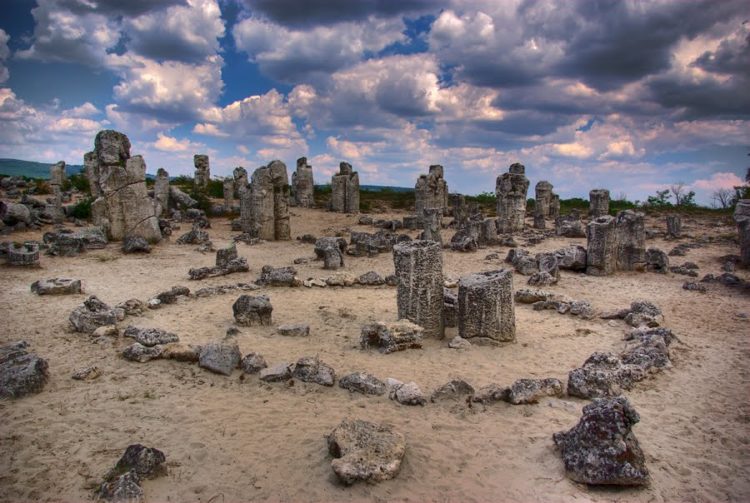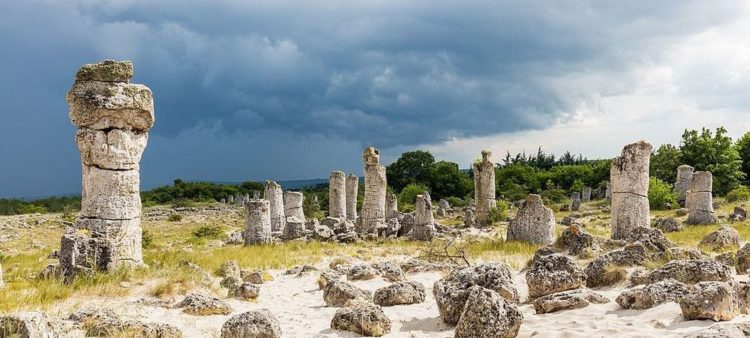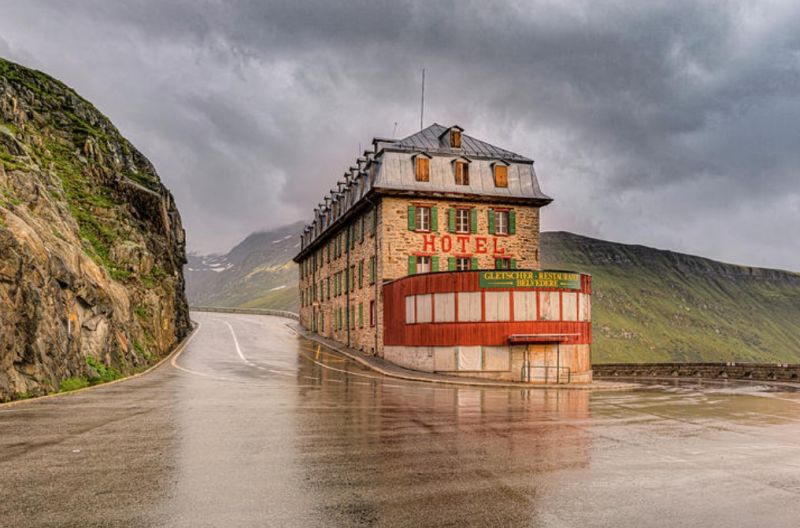Pobiti Kamani Stone Forest is a breathtaking natural area located approximately 18 km west of Varna, Bulgaria, on the route to Sofia. At first glance, it looks like the ruins of an ancient temple, but these broken stone pillars are all-natural. The stone columns are scattered in lesser groups across an 8 km long belt along the northern Bulgarian Black Sea coast. One can see desert-like landscapes, adding to the bizarre ambiance of the location. This odd setting gives it the appearance of an antique ruin or a relic from a long-lost civilization.
Although Pobiti Kamani Stone Forest of Bulgaria varies in height, with some reaching 5 to 7 meters tall, and thickness ranges from 30 centimeters to 3 meters across. Therefore, the most interesting thing about these pillars is that they are mostly hollow and filled with sand.
They don’t have a firm foundation or are attached to the bedrock. In its place, they’re insecurely stuck into the surrounding sand as if someone had hammered them into the earth. These stones identified since ancient times, but in 1828, they were first documented by the scientific community.
Due to its unusual look, it is frequently compared to other well-known stone structures around the world, making it one of the most enigmatic and distinctive sites in Bulgaria. Hence, since then, Pobiti Kamani Stone Forest has dozens of theories attempted to clarify their formation, ranging from coral growth to Eocene bubbling reefs, to limestone concretions.
Though one of the most believable explanations comes from the Bulgarian geologist brothers Peter and Stefan Bonchev Gochev. The brothers thought the scattered columns were dated back to the Cenozoic Era, some 50 million years ago, when most of Eastern Europe was covered by oceans. Sediments and sludge settled to the bottom of the seabed and were compressed into limestone. However, sometime later, methane gases from ancient deposits took place seeping from the seabed. As the results pressurized gases made their way up through the limestone layer, they left behind long tubes.
Further, millions of years later, after the sea receded away, the erosion process of the limestone layer left the tall columns stuck in the ground. The gas-seepage theory doesn’t explain everything, but it’s the best we have. The Politi Kamani Stone Forest was designated a natural landmark in the late 1930s. Therefore, it was nominated for the “UNESCO World Heritage Site” status in 2011 but hasn’t been able to make the cut.
Locals and visitors alike frequently link Pobiti Kamani with mystical and spiritual energy. It has long been regarded as a location of power, and some believe the stones have healing abilities or are linked to ancient rituals. Pobiti Kamani is one of the world’s most fascinating geological formations, providing visitors with a view into the Earth’s ancient history as well as a sense of amazement. A stone forest in Kunming, China, is also popular in the world.
Also Read:













